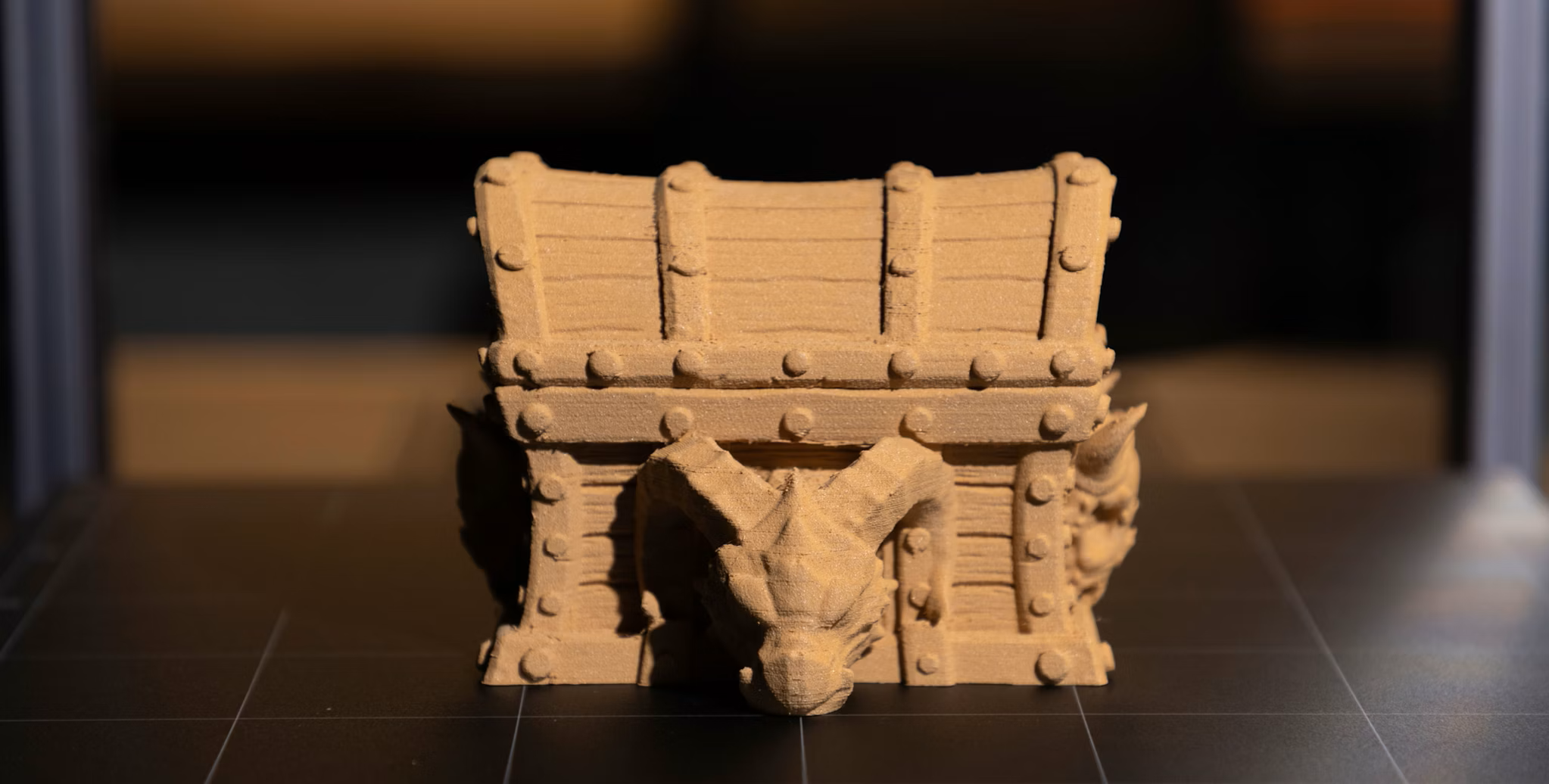
In any manufacturing field, using high-quality filament is a top factor to rely on and a key to success. We hear this everywhere, and of course, we agree. However, success in 3D printing also depends on maintaining the filament in its best condition. Even the finest filaments may fail to deliver the desired results if they absorb moisture.
Many manufacturers overlook how humidity affects their prints and only realize the problem when they see defects like stringing, poor adhesion, or brittle layers. So, what can save the situation?
This is where a filament dryer or a dry box is used.
A filament dry box solves this issue by maintaining a controlled environment for your materials, ensuring your prints are strong, smooth, and defect-free. But do you need one? Let’s explore how filament storage impacts print quality and when a filament dryer becomes essential.
What is a Filament Dry Box?
A 3D printer filament dry box is essential for maintaining filament quality and preventing print failures caused by moisture absorption. Many standard 3D printing materials, including PLA, ABS, PETG, and Nylon, are hygroscopic, meaning they pull water from the air. Even minor exposure to humidity can alter the filament’s properties, leading to brittle prints, extrusion inconsistencies, and poor layer adhesion.
Moisture affects each filament differently. PLA becomes brittle, PETG turns sticky, and Nylon swells, causing extruder clogs and rough textures. Without proper 3D filament storage, these issues can result in wasted material and failed prints.
A filament dry box offers two levels of protection:
-
Passive Dry Boxes: Airtight containers with desiccant packs (like silica gel) that absorb moisture. They work well for short-term filament storage but require frequent desiccant replacement.
-
Active Dry Boxes include built-in filament dehydrators or filament dehumidifiers, using heat to remove moisture actively. High-end options feature humidity sensors and allow real-time drying while printing.
For casual users, a simple filament dry storage setup may be enough. However, professionals working with advanced materials like Nylon or TPU should invest in an active 3D printer filament dryer to maintain consistent print quality and avoid material degradation.
Why Moisture is a Filament’s Worst Enemy
Understanding the signs of moisture in the filament is crucial for ensuring high-quality prints. Even a small amount of absorbed water can drastically impact performance, leading to:
-
Bubbling and popping noises as trapped moisture turns into steam inside the extruder.
-
Stringing and oozing, creating messy, uneven prints.
-
Weakened layer adhesion, making prints brittle and prone to breaking.
-
Nozzle clogs, as expanding steam causes inconsistent extrusion.
Some filaments are more moisture-sensitive than others. PLA, PETG, and TPU absorb water moderately, while Nylon, PVA, and Polycarbonate are highly hygroscopic. A PLA filament dryer can help with minor moisture issues, but for Nylon or PVA, a dedicated nylon filament dryer is essential.
A 3D printer filament dryer before and during printing ensures optimal filament performance, extending the material’s lifespan and preventing costly failed prints.
Choosing the Right Drybox for Your Needs
Selecting the right filament dry box depends on how often you print, the materials you use, and your local humidity levels. Here are the key options:
-
Essential Filament Storage: Airtight containers with desiccant packs work well for short-term storage but require regular maintenance.
-
Mid-Range Dryboxes: These 3D filament dry boxes include built-in heating, humidity indicators, and improved seals for consistent drying.
-
High-End Drying Stations: Large filament dryers with programmable temperature settings, ideal for Nylon, PVA, and industrial applications.
If you live in a humid climate, a 3D printing filament dryer isn’t a luxury — it’s necessary for high-quality, reliable prints.
When Do You Need a Drybox?
A filament dry box is not just for professionals — trust us, it’s essential for anyone who wants consistent print quality and substantial, reliable parts. You should consider investing in dry filament storage if:
✅ You notice signs of moisture in the filament, such as weak adhesion, bubbling, or stringing.
✅ You frequently use moisture-sensitive materials like Nylon, PVA, or TPU, which require a nylon filament dryer for best results.
✅ Your prints need high precision and mechanical strength, especially for engineering or commercial applications.
✅ You live in a humid climate, making storing 3D printer filament challenging without a 3D printing filament dryer.
Even if you don’t print daily, keeping your filament dry extends its lifespan, prevents costly failures, and ensures flawless prints whenever needed.
Dryboxes vs. Professional 3D Printing Services
While a filament storage solution for 3D printers is great for enthusiasts, it doesn’t guarantee flawless prints. Filaments can absorb moisture in a dry box over time, leading to poor adhesion, surface defects, and uneven extrusion. If your project requires high-quality, moisture-free filament, working with professional 3D printing experts ensures:
✔ Optimal material choice – Professionals use high-end drying techniques tailored to each material's sensitivity, from standard PLA to advanced composites like carbon-fiber-reinforced Nylon or PEEK.
✔ State-of-the-art equipment – Industrial-grade filament dryers and climate-controlled storage ensure precise humidity control, preventing common issues like stringing, bubbling, and weak layer adhesion.
✔ No failed prints – Moisture-damaged filament can cause nozzle clogging, dimensional inaccuracies, and mechanical weaknesses. Professionals eliminate these risks, ensuring predictable, high-quality output.
✔ Access to advanced technologies – Many professional services use closed-loop systems, material monitoring, and vacuum drying chambers that go far beyond hobbyist solutions.
Moreover, turning to experts will benefit businesses, prototypes, or critical projects — your trust in them leads to fast and reliable results without the hassle of managing a filament storage system.
For example, our team creates many custom models, and we know better than anyone that instead of investing money in expensive drying equipment to fix print issues, you save time and money that’s better spent focusing on design and innovation. Meanwhile, we’ll ensure material integrity and printing accuracy 100%.










